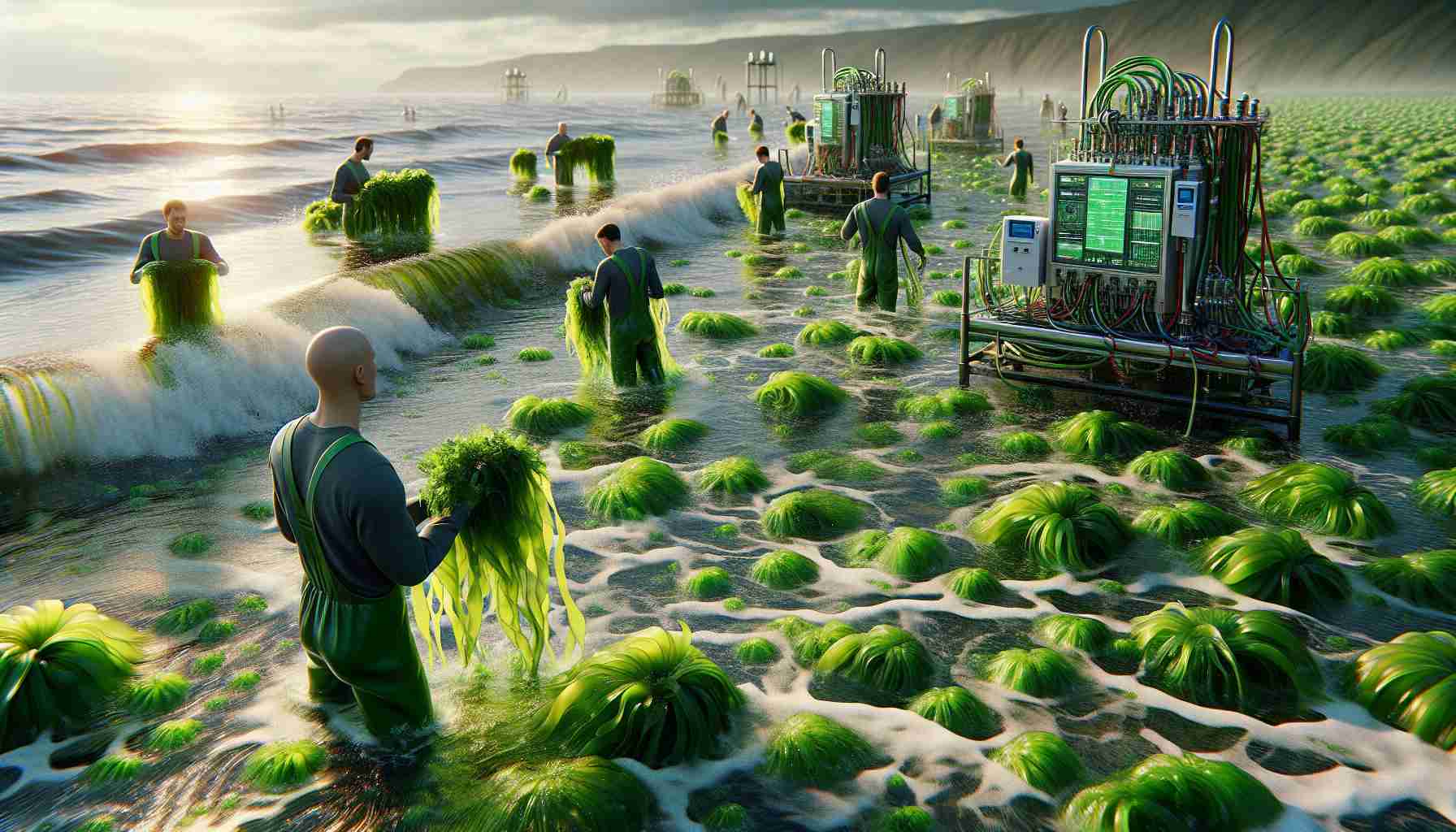
In the heart of Santiago, Chile, researchers are pioneering a novel approach to renewable energy by studying the properties of seaweed. This initiative focuses on biophotovoltaics, a cutting-edge technology that captures energy from photosynthetic organisms, turning sunlight into electricity.
Federico Tasca, a prominent researcher at the University of Santiago, leads a team dedicated to developing innovative biophotovoltaic panels. These panels utilize the unique qualities of seaweed, which, unlike traditional microalgae, are more robust and simpler to harvest. This new methodology explores how these macroalgae can oxidize water while absorbing sunlight, releasing electrons in the process. The captured electrons can then be directed through an electric circuit, generating a potential difference to produce power.
While this technology is still in its infancy, Tasca acknowledges the promise it holds. Even if not yet optimized for high efficiency, the system could serve as a valuable energy source in resource-limited environments, capable of powering basic devices like LEDs.
Alejandra Moenne, head of marine biology at the university, reinforces the significance of this research. She describes seaweed as an underwater treasure trove, abundant in genes and molecules that remain largely unexplored, suggesting a vast potential for new discoveries. This quest for sustainable energy solutions could revolutionize how we harness nature’s resources, paving the way for a greener future.
Harnessing Seaweed: A Green Revolution in Energy
As the world seeks sustainable energy solutions, seaweed has emerged as a promising candidate for renewable energy generation. This aquatic organism, already valued in culinary arts and as a source of biofertilizers, now presents opportunities for energy production that can accelerate the shift away from fossil fuels.
Why Seaweed for Energy?
Seaweed, or macroalgae, has several advantages that make it an attractive option for renewable energy. Notably, it grows rapidly—some species can grow up to three feet a day—allowing for significant biomass production without the extensive land use associated with traditional biofuels. Furthermore, seaweed cultivation does not require fertilizers or fresh water, reducing the environmental footprint typically linked to agricultural practices.
Key Questions Surrounding Seaweed Energy
1. What are the methods for converting seaweed into energy?
Seaweed can be converted into energy through various methods, including anaerobic digestion, which produces biogas, and direct conversion via biophotovoltaics, as explored by Federico Tasca’s team. Additionally, seaweed can be processed into bioethanol or biodiesel.
2. What are the environmental impacts of seaweed farming?
While seaweed farming is generally considered sustainable, concerns exist. For instance, excessive harvesting can lead to ecosystem disruptions. Responsible cultivation practices are crucial to maintain aquatic biodiversity.
3. How does the energy production efficiency of seaweed compare to other renewables?
Currently, the energy conversion efficiency of seaweed is lower than solar panels and wind energy. However, ongoing research is focused on optimizing these processes, making them increasingly viable alternatives.
Advantages of Seaweed as an Energy Source
– Sustainability: Seaweed cultivation has a minimal environmental impact, requiring no freshwater or fertilizers.
– Carbon Sequestration: Seaweed naturally absorbs carbon dioxide, helping mitigate climate change.
– Diverse Applications: Beyond energy, seaweed has applications in food, pharmaceuticals, and bioplastics, enhancing its economic potential.
Challenges and Controversies
Despite its promise, the seaweed energy sector faces challenges such as:
– Scalability: Transitioning from small-scale studies to commercial operations is complex and requires significant investment.
– Research and Development Needs: Many aspects of seaweed energy conversion remain underexplored, calling for increased funding and research collaboration.
– Market Competitiveness: Competing with established renewable energy sources can be difficult, especially with current efficiency rates.
In conclusion, harnessing the power of seaweed presents a unique opportunity to contribute to the global transition to renewable energy. While challenges remain, the potential benefits—coupled with its sustainable nature—position seaweed as a vital component of future energy strategies.
For further reading on the potential of seaweed in sustainable practices, visit Seaweed.org for comprehensive insights.



